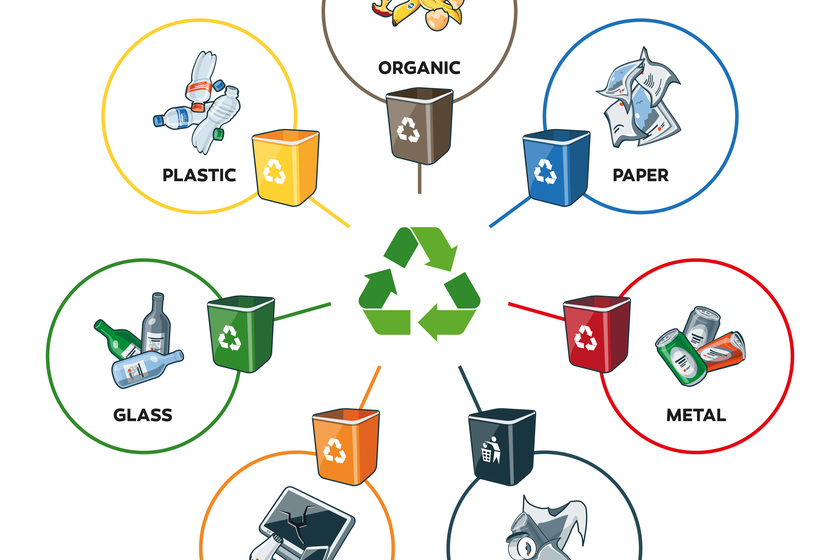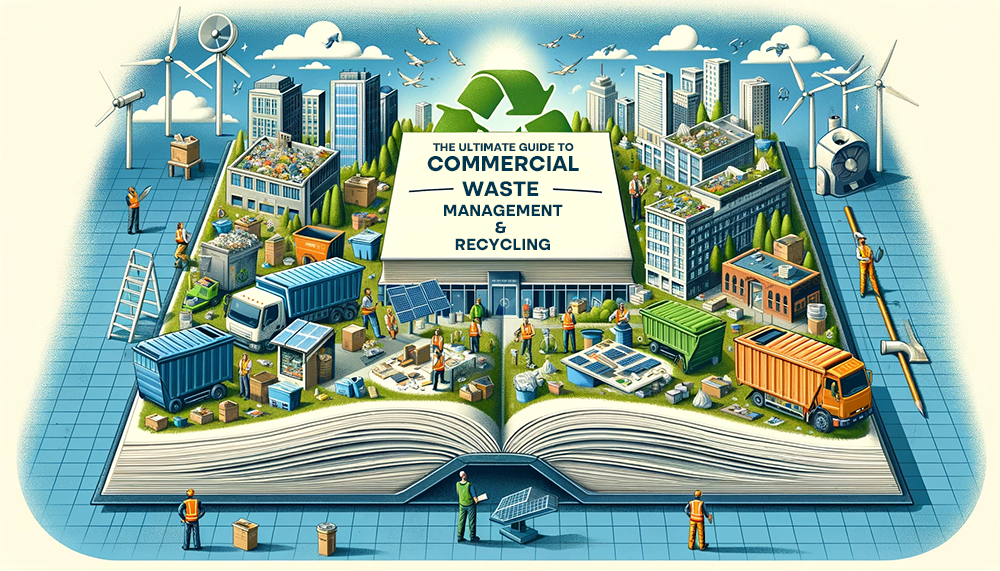Understanding the Category and Handling of Different Kinds Of Waste
Reliable waste monitoring is pivotal for environmental sustainability, requiring a thorough understanding of the classification and handling of different waste types. Home waste, industrial by-products, hazardous products, electronic refuse, and natural residues each necessitate distinctive procedures to guarantee safety and security and decrease eco-friendly damage. Applying proper partition, treatment, and disposal techniques is vital to alleviate adverse ecological effects and promote source preservation. As an example, the composting of natural waste contrasts greatly with the detailed treatments required to take care of unsafe substances. This complex strategy to squander monitoring highlights its complexity and the essential demand for specialized knowledge in this domain name.

House Waste
Home waste, encompassing a wide selection of discarded materials created from day-to-day living tasks, represents a considerable element of the general waste stream - recycling lives services. This category includes natural waste such as food scraps, lawn cuttings, and paper items, together with not natural materials like plastics, steels, and glass. The varied nature of family waste necessitates efficient classification and administration to alleviate ecological effect and promote lasting living methods
Efficient home waste administration starts with partition at the resource, promoting recycling, composting, and risk-free disposal. Organic waste, for example, can be composted to generate nutrient-rich soil amendments, minimizing landfill problem and boosting soil health. Recyclable materials, including paper, glass, and certain plastics, can be refined and repurposed, preserving resources and reducing power intake connected with brand-new material manufacturing.
Furthermore, unsafe house waste such as batteries, electronic tools, and cleaning chemicals requires specialized dealing with to stop soil and water contamination. Public recognition campaigns and practical disposal options play vital roles in ensuring correct disposal and recycling of these materials. By implementing robust waste reduction techniques and fostering community involvement, communities can substantially minimize the environmental impact of household waste.
Hazardous Waste
Industrial waste, a major factor to international waste generation, encompasses a varied variety of products produced by manufacturing, building, and various other industrial activities. This classification includes spin-offs such as scrap metal, plastics, rubber, chemicals, and other deposits. The make-up and quantity of hazardous waste can vary considerably relying on the market and manufacturing processes entailed. Efficient management of industrial waste is important for reducing environmental effect and advertising sustainable practices.
The handling of industrial waste commonly entails a number of procedures: collection, treatment, segregation, and disposal. Collection systems are developed to efficiently gather waste products from different resources within an industrial procedure.
Adopting methods such as waste minimization, source recovery, and recycling can significantly reduce the worry of hazardous waste on the environment, adding to more sustainable commercial practices.
Contaminated Materials

The category of contaminated materials is typically based upon its chemical and physical features. Harmful wastes have unsafe materials that can trigger unfavorable health results also at low focus. Corrosive wastes can damage or damage living materials and cells. Combustible wastes can quickly fire up, positioning fire risks, while reactive wastes can create surges or release toxic gases upon call with various other substances.
Effective unsafe waste administration includes numerous essential techniques: identification and partition of dangerous have a peek at this website products, risk-free transport and storage, and appropriate therapy and disposal. Treatment approaches may consist of chemical incineration, stablizing, and neutralization. Regulative conformity is vital, guided by frameworks such as the Source Conservation and Recuperation Act (RCRA) in the USA, which guarantees secure and environmentally audio management of contaminated materials.
Electronic Waste
Electronic waste, often abbreviated as e-waste, represents an expanding obstacle in waste management because of the quick obsolescence of innovation. This group incorporates a broad variety of disposed of digital tools, including smartphones, computers, televisions, and family devices. The intricacy of e-waste exists in its make-up; these items consist of a combination of important materials such as gold and copper, along with hazardous substances like mercury, cadmium, and lead.

Regulations and regulations, such as the European Union's Waste Electric and Digital Devices (WEEE) Instruction, goal to promote accountable e-waste management. These plans mandate manufacturers to promote the collection and recycling of electronic items, thereby lowering the problem on landfills and lessening environmental contamination.
Organic Waste
Organic waste, incorporating biodegradable products such as food scraps, yard trimmings, and farming deposits, makes up a considerable portion of the municipal strong waste stream. This type of waste is notable not just for its volume yet additionally for its possible environmental influence if not taken care of appropriately. Organic waste can decay anaerobically in land fills, generating methane, a powerful greenhouse gas adding to environment change.
Correct handling of organic waste entails several strategies. Composting is a widely taken on method, changing organic products into beneficial compost that can improve soil and support lasting agriculture. This procedure also minimizes the volume of waste sent to land fills. Another technique is anaerobic digestion, which damages down organic issue in the absence of oxygen, producing biogas that can be utilized as a renewable resource source. Furthermore, diverting food waste from click for more land fills with contribution programs can reduce food insecurity while lessening waste.
Municipalities and organizations are visit here progressively acknowledging the significance of natural waste management. Carrying out thorough natural waste recycling programs not only mitigates ecological influences yet likewise aligns with broader sustainability objectives, advertising a circular economic climate where resources are constantly reused and repurposed.
Conclusion
Reliable waste monitoring and environmental management necessitate a comprehensive understanding of the category and handling of different waste types. Home, industrial, harmful, electronic, and organic waste each require distinct procedures for therapy, disposal, and partition. Appropriate administration decreases environmental impact, saves resources, and promotes sustainability. Carrying out proper techniques for each and every waste kind makes sure liable and risk-free waste management methods, ultimately adding to the protection of ecological communities and public health and wellness.
Effective waste management is critical for environmental sustainability, calling for a detailed understanding of the category and handling of numerous waste types.Home waste, including a wide selection of discarded materials produced from everyday living tasks, stands for a significant component of the overall waste stream.Industrial waste, a major contributor to worldwide waste generation, includes a varied array of products generated by production, construction, and other industrial activities (recycling lives services).Harmful waste, a crucial worry in waste administration, consists of products that posture significant risks to human health and the environment due to their hazardous, harsh, flammable, or reactive homes.Organic waste, including eco-friendly products such as food scraps, backyard trimmings, and farming residues, makes up a substantial portion of the local strong waste stream